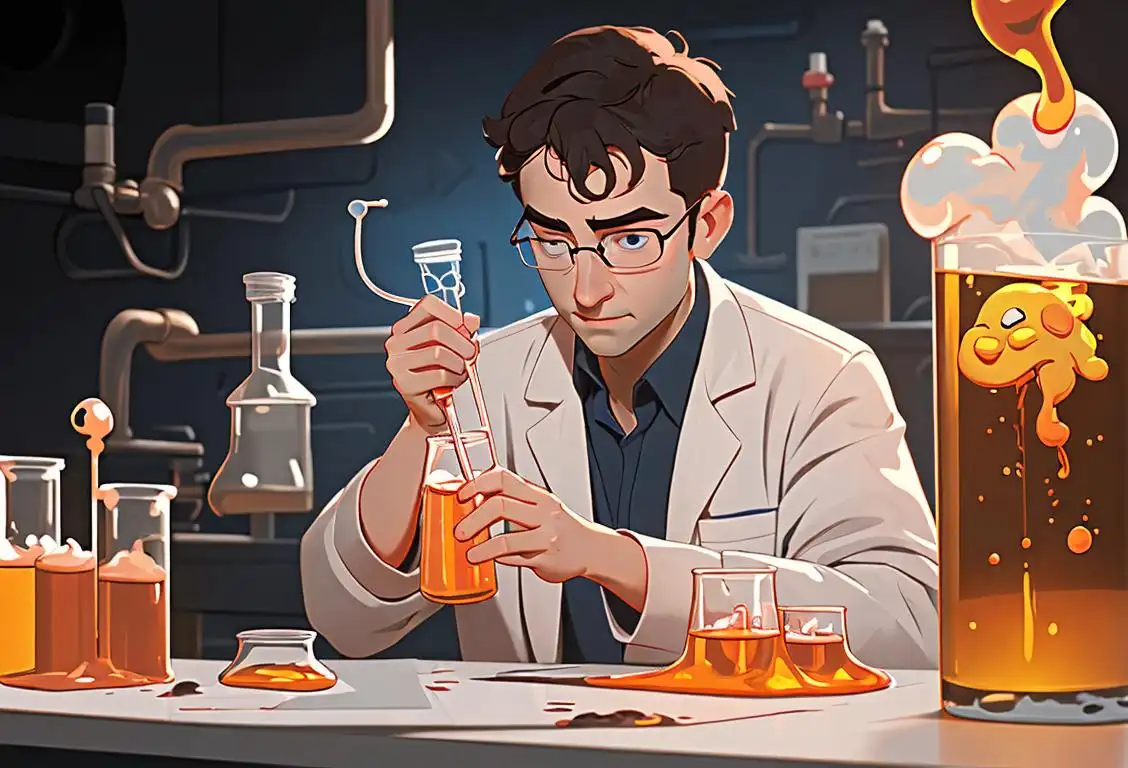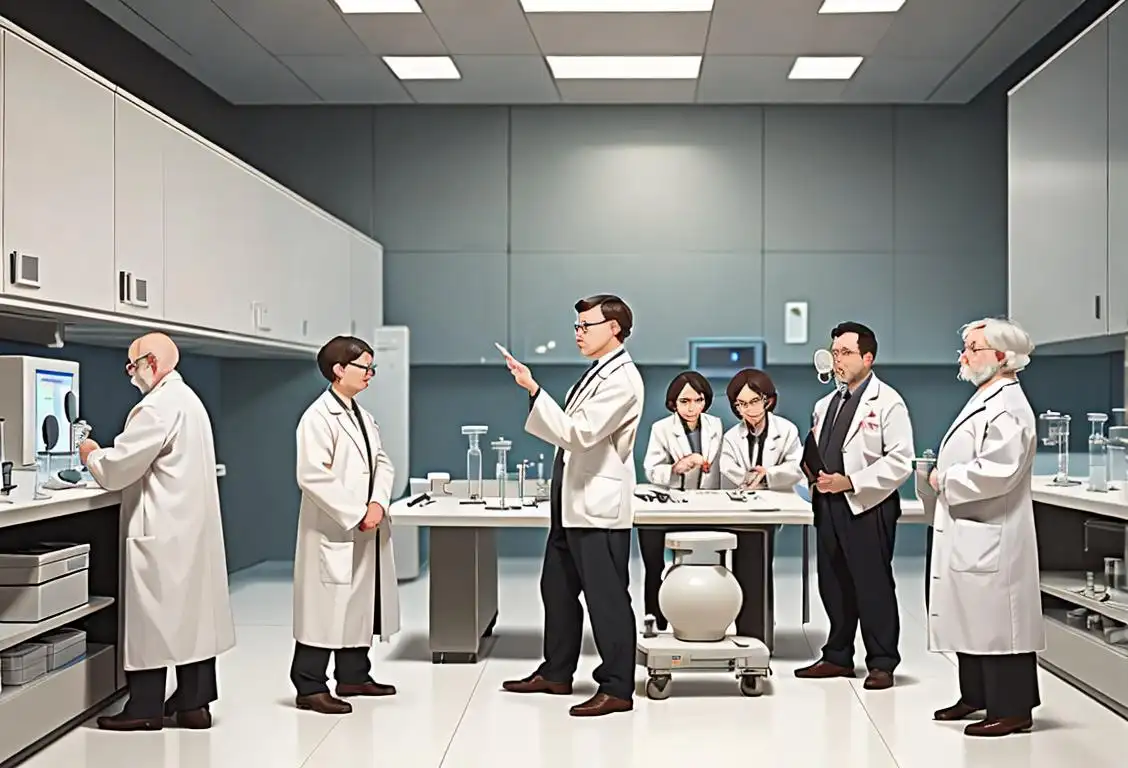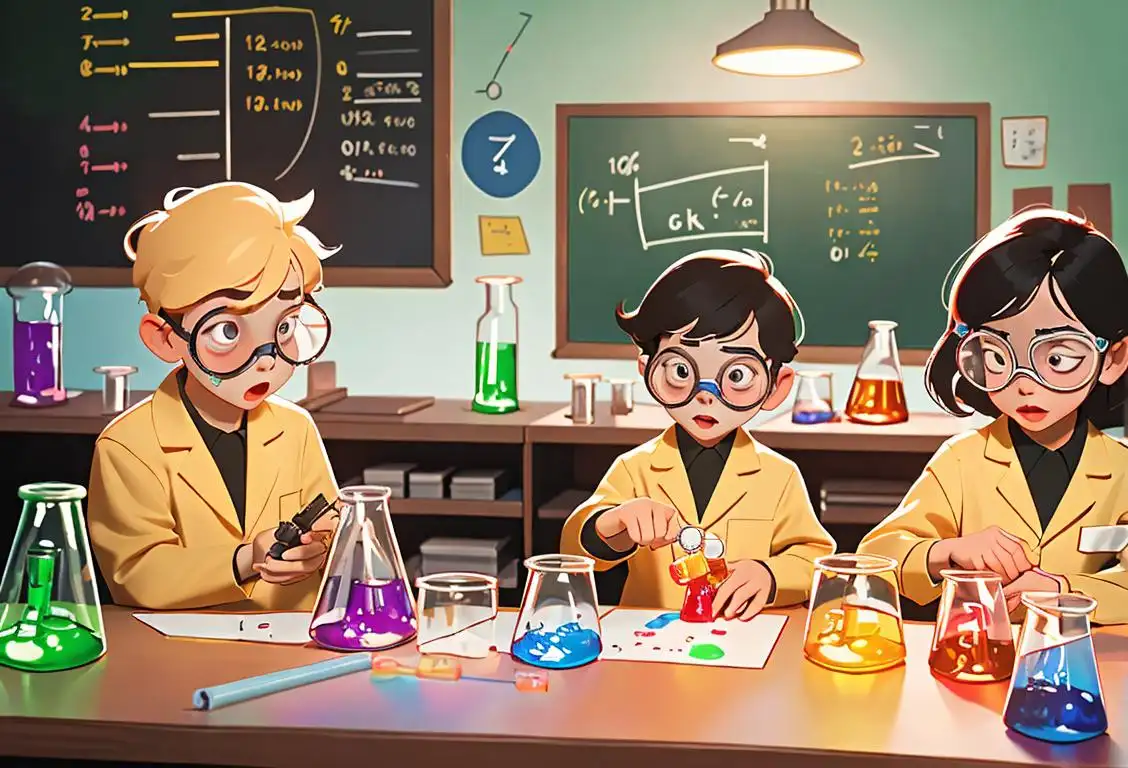National Thermal Engineer Day

Hey there, fellow nerds and aspiring thermal engineers! It's time to rejoice because it's National Thermal Engineer Day, the coolest day on the calendar! Get ready to dive into the fascinating world of heat, temperature, and all things thermodynamic. So grab your goggles and let's celebrate in style!
When is Thermal Engineer Day?
It's national thermal engineer day on the 24th July.
The Origins of National Thermal Engineer Day
Every year on July 24th, we honor the unsung heroes who have dedicated their lives to tackling the intricate challenges of thermal engineering. The origins of this special day can be traced back to the online community, where thermodynamics enthusiasts joined forces to give recognition to their field.
In 2020, there were a whopping 143 online mentions, with July 24th taking the crown as the most popular day of celebration. From heartfelt social media posts to blog articles filled with nerdy excitement, the internet was buzzing with love for thermal engineers everywhere.
What Does a Thermal Engineer Do?
Now, you might be wondering what exactly thermal engineers do. Well, my curious friend, they are the magicians behind the scenes who ensure that things stay cool when they need to and hot when they should be. They tinker with heat transfer, design cutting-edge cooling systems, and keep our technology, buildings, and even spaceships from going up in smoke!
Whether it's optimizing the thermal management of electronic devices or developing energy-efficient solutions, thermal engineers play a crucial role in our modern lives. They bring together science, engineering, and a touch of wizardry to keep things just the right temperature.
How to Celebrate National Thermal Engineer Day
Now that you're properly acquainted with the remarkable world of thermal engineering, let's dive into some ideas to make this day extra special:
- Send a thank-you note or message to a thermal engineer in your life and express your admiration for their work. We all love a little appreciation!
- Learn something new about thermal engineering by diving into online resources or joining a discussion forum. You might discover hidden gems of knowledge!
- Get creative and try building your very own miniature cooling system using everyday materials. Who knows? You might unleash your inner thermal engineer!
- Spread the word about National Thermal Engineer Day on social media using the hashtag #ThermalEngineerDay. Let's make some noise!
Did You Know?
Here's a fun fact to impress your friends at the next dinner party: Did you know that the first practical application of thermodynamics can be traced back to ancient Egypt? They used their knowledge of thermal expansion and contraction to build the awe-inspiring pyramids that still stand today! Talk about hot engineering!
History behind the term 'Thermal Engineer'
1797
Invention of the Steam Engine
In 1797, the steam engine was invented by Thomas Savery. This invention marked a significant milestone in the history of thermal engineering, as it laid the foundation for understanding the principles of heat transfer and energy conversion.
1824
The Birth of Thermodynamics
In 1824, French physicist Sadi Carnot laid the foundation for thermodynamics when he published his seminal work 'Reflections on the Motive Power of Fire.' This work introduced the concept of heat engines and the efficiency of converting heat into mechanical work. Carnot's theories would play a crucial role in the development of thermal engineering.
1765
The Birth of Thermodynamics
In 1765, Scottish chemist Joseph Black discovered latent heat and laid the foundation for the study of thermodynamics. His work revolutionized our understanding of heat and energy, setting the stage for the emergence of thermal engineering.
1824
Sadi Carnot and the Origins of Thermal Engineering
French engineer Sadi Carnot published his groundbreaking work 'Reflections on the Motive Power of Fire' in 1824. Carnot's work introduced the concept of heat engines and established the principles of thermodynamic cycles. This marked a pivotal moment in the development of thermal engineering as a distinct field of study.
1848
The Industrial Revolution and the Rise of Steam Power
The industrial revolution brought forth a rapid increase in the use of steam power for manufacturing and transportation. This led to a growing demand for individuals who could design and optimize steam-powered systems. Engineers specializing in the design and optimization of these systems became known as thermal engineers, as they dealt with the conversion and management of heat energy.
1824
Carnot's Thermostatique
In 1824, French physicist Sadi Carnot published his groundbreaking work titled 'Réflexions sur la puissance motrice du feu' (Reflections on the Motive Power of Fire). This work, often referred to as Carnot's Thermostatique, laid the foundation for thermodynamics and introduced the concept of heat engines. Carnot's theories greatly influenced the development of thermal engineering.
1865
Gibbs and the Birth of Chemical Thermodynamics
In 1865, American scientist Josiah Willard Gibbs introduced the field of chemical thermodynamics by presenting his paper 'On the Equilibrium of Heterogeneous Substances.' This marked a significant advancement in thermodynamics by extending its principles to chemical reactions and mixtures. The emergence of chemical thermodynamics further expanded the scope of work for thermal engineers, as now they had to consider the thermodynamic properties of chemical substances.
1843
Lord Kelvin's Absolute Temperature Scale
In 1843, British physicist William Thomson, also known as Lord Kelvin, introduced the concept of an absolute temperature scale based on the principles of thermodynamics. The Kelvin scale, which set absolute zero as the point of zero temperature, provided a new way to measure and understand heat. Lord Kelvin's work revolutionized thermal engineering, enabling more precise calculations and analysis.
1856
The Rise of the Industrial Revolution
During the mid-19th century, the Industrial Revolution brought about significant advancements in engineering and manufacturing. The growing demand for efficient energy utilization led to the emergence of thermal engineers who specialized in designing and optimizing heat engines, boilers, and other heat-based systems.
1870
First Laws of Thermodynamics
In the 1870s, the first laws of thermodynamics were formulated, laying the groundwork for understanding the relationship between heat, energy, and work. Rudolf Clausius, Josiah Willard Gibbs, and others contributed to the development of thermodynamics, providing crucial insights into heat transfer and energy conservation. These laws became fundamental principles in the field of thermal engineering.
1897
The Formation of the American Society of Mechanical Engineers (ASME)
In 1897, the American Society of Mechanical Engineers (ASME) was founded with the aim of promoting advancements in mechanical engineering. As thermal engineering was an integral part of this discipline, the ASME played a crucial role in fostering the growth of thermal engineering as a profession.
1897
The Founding of the American Society of Mechanical Engineers
In 1897, the American Society of Mechanical Engineers (ASME) was founded. ASME played a crucial role in advancing the profession of thermal engineering by establishing standards, promoting research, and providing a platform for professionals to exchange knowledge. The society's efforts contributed to the recognition and growth of thermal engineering as a distinct field of engineering.
20th Century
Advancements in Thermal Engineering
Throughout the 20th century, thermal engineering underwent significant advancements. Engineers and scientists developed new technologies, such as heat exchangers, refrigeration systems, combustion engines, and power plants. The field expanded into various applications, including aerospace engineering, HVAC systems, energy production, and more. Advancements in materials science, fluid dynamics, and computer simulations further enhanced the capabilities of thermal engineers.
1930s
The Rise of Air Conditioning and Refrigeration
The development and widespread adoption of air conditioning and refrigeration systems in the 1930s created new challenges and opportunities for thermal engineers. They were tasked with designing efficient cooling systems, developing refrigerants, and ensuring proper heat transfer mechanisms. The growth of the air conditioning and refrigeration industry further solidified the importance of thermal engineering.
20th Century
Thermal Engineering in the Modern Era
Throughout the 20th century, thermal engineering continued to evolve and expand its scope. The development of new materials, computer-aided design (CAD) tools, and sophisticated simulation techniques revolutionized the way thermal engineers design and analyze thermal systems. From the design of energy-efficient buildings to the development of advanced cooling technologies, thermal engineers have played a vital role in shaping the modern world.
1960s
Advancements in Computational Thermal Engineering
The advent of digital computers in the 1960s revolutionized the field of thermal engineering. Computational methods such as finite element analysis and computational fluid dynamics enabled engineers to simulate and optimize complex thermal systems with greater accuracy. These advancements empowered thermal engineers to design more efficient and innovative systems.
21st Century
Renewable Energy and Sustainability
In the 21st century, thermal engineers have played a vital role in the development of renewable energy technologies and sustainable practices. From optimizing solar thermal systems to designing efficient geothermal power plants, their expertise is crucial for harnessing and managing thermal energy in environmentally friendly ways. The focus on renewable energy and sustainability has reshaped the priorities and responsibilities of thermal engineers in modern times.
Did you know?
Did you know that the first practical application of thermodynamics can be traced back to ancient Egypt? They used their knowledge of thermal expansion and contraction to build the awe-inspiring pyramids that still stand today! Talk about hot engineering!Tagged
fun technology scienceFirst identified
24th July 2015Most mentioned on
24th July 2020Total mentions
143Other days
Future Day
Kilo Day
Petroleum Day
Weather Forecast For Day
Space Exploration Day
Space Centre Day
Battery Day
Thermal Engineer Day
Stem Day
Science Day








